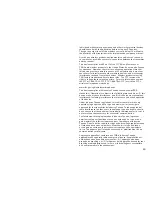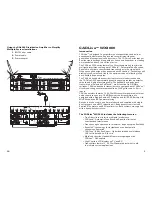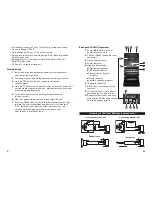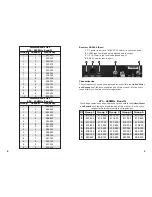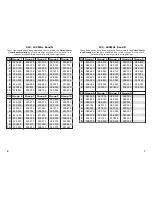
13
Individuals with cardiac pacemakers and other similar medical devices
should consult with their physician before using any RF devices.
Though the output level of this wireless system is below 50 milliwatts,
the proximity of the transmitter to the implant device could pose a threat.
As with any wireless product, environmental conditions can reduce or
in some cases prohibit a successful connection between the transmitter
and the receiver.
This device complies with Part 15 of the FCC Rules. Most users of
CAD Audio wireless products in the United States do not need a license
for operation. However, the rules for unlicensed operation state that
this device must not operate in excess of 50 milliwatts and it must not
cause harmful interference to other wireless devices, and must accept
interference received from other devices. Wireless products meeting
CAD factory standards adhere to these rules. The FCC reserves the
right to change these rules at any time. For more information contact
the FCC at 1-888-CALL-FCC (TTY: 1-888-TELL-FCC) or visit the FCC’s
wireless microphone website at:
www.fcc.gov/cgb/wirelessmicrophones
This device complies with Industry Canada licence-exempt RSS
standard(s). Operation is subject to the following two conditions: (1) this
device may not cause interference, and (2) this device must accept any
interference, including interference that may cause undesired operation
of the device.
Under Industry Canada regulations, this radio transmitter may only
operate using an antenna of a type and maximum (or lesser) gain
approved for the transmitter by Industry Canada. To reduce potential
radio interference to other users, the antenna type and its gain should
be so chosen that the equivalent isotropically radiated power (e.i.r.p.) is
not more than that necessary for successful communication.
Conformément à la réglementation d’Industrie Canada, le présent
émetteur radio peut fonctionner avec une antenne d’un type et d’un
gain maximal (ou inférieur) approuvé pour l’émetteur par Industrie
Canada. Dans le but de réduire les risques de brouillage radioélectrique
à l’intention des autres utilisateurs, il faut choisir le type d’antenne
et son gain de sorte que la puissance isotrope rayonnée équivalente
(p.i.r.e.) ne dépasse pas l’intensité nécessaire à l’établissement d’une
communication satisfaisante.
Le présent appareil est conforme aux CNR d’Industrie Canada
applicables aux appareils radio exempts de licence. L’exploitation est
autorisée aux deux conditions suivantes : (1) l’appareil ne doit pas
produire de brouillage, et (2) l’utilisateur de l’appareil doit accepter tout
brouillage radioélectrique subi, même si le brouillage est susceptible
d’en compromettre le fonctionnement.


